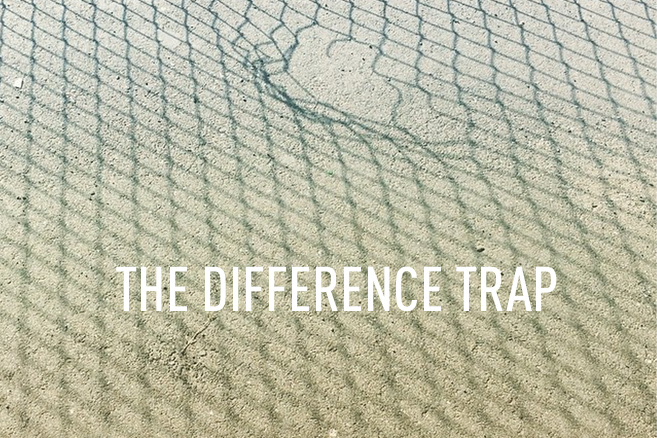Why do people hire you? This is everything.
Why do you do what you do? This is more.
It’s almost common convention to say business wins over art.
And while I make no bones that business matters and matters a lot, I still consider the notion to be, in simplest terms, BS.
What is true is the more you enter the massive middle, where sameness dominates and differentiation dissipates, the more business becomes not just the best tool, but the only tool. In the massive middle need is baked in. Demand is strong, but supply is stronger, so success means business strategy.
But who the hell wants to be stuck in the massive middle?
The more personal the work becomes, the more everything changes. Difference is the ultimate advantage. It will protect you, define you, and distinguish you. But if you want the art to count, it’s not enough.
As much as you may hear about difference, more forms fail than succeed. Don’t get trapped by the notion that difference alone will get you the work, because difference without need is chaos.
Need anchors difference. In every marketplace. All of the time.
Denis Reggie brought liveliness to an industry that was static and staid. Jose Villa brought lightness and levity to a market that was heavy-handed and dramatic. People like Dan O’Day and Samm Blake captured ruggedness and heft as rustic hit its stride, giving the perfect editorial alternative to soft and flowy.
Understanding need isn’t just a business question, though. If you’re daring enough to forge your own path, you can only understand need through craft.
Why do people hire you?
It’s a question too few people can answer, because difference must precede style, so style can’t be an answer. Style only comes into existence once the conventions that were once difference become similarity.
Before every style becomes a style, it conveys a message. You have to have a reason to do what you do, and you have to know how your work makes people feel and what it makes them think.
That means flowing hair in the wind, backlit bodies in the sun, and even the most dramatic and exotic of locations paired with the smallest of people, as engaging as they may be, are not enough. These things are already becoming part of the canon of the middle.
Without the communication, things like film or digital, your toning, your lighting, and even your subject, composition, and timing are irrelevant. Your process and your choices are the byproducts of your message. They are not your message.
So what are you saying?
Great art grabs the mind like a vice. Great artists control that process, forcing thought and feeling. As it turns out that’s great marketing, too.
At the end the day, people want their problems solved, so knowing what you mean to them is everything. How would you position yourself, if you didn’t? And understanding yourself is the first place to look.
It’s ironic so many business people understand exactly why their products—things like flavored chips, soft drinks, and dishwashing detergent—affect their audience, when so many artists don’t. It’s odd that a group of people dedicated to communication in a medium where it matters the most, can so rarely answer the questions.
We must.
Not just for the craft, but for survival.
Most of us learn by throwing it out there, and seeing what sticks. And while that’s a start, it’s not an end. The problem isn’t that we just throw it out there or that we keep throwing it out there. It’s that we forget to really understand why things stick.

Yes… we do need to understand what it is we’re trying to say with the images we create. Funny thing, I think I knew more about what I was trying to say with my art before I turned it into my work. I was reading this post, soaking up the joy in the shared understanding that photography is so much more than technical skill or perceived style. It’s not so much about how we share the message, but the heart of the message we’re trying to convey…. and how that message meets the needs of our target market.
So I’ve been struggling with this for many months now, regaining the grasp I had on why people love my work, why people want what I have to offer versus what the 20 photographers down the street are offering. I was reading this post and loving every word of it and hoping with each passing sentence that you would shed some light on how to remember (or discover) what makes us different? And then how to market this understanding.
“It’s ironic so many business people understand exactly why their products—things like flavored chips, soft drinks, and dishwashing detergent—affect their audience, when so many artists don’t. It’s odd that a group of people dedicated to communication in a medium where it matters the most, can so rarely answer the questions.
We must.
Not just for the craft, but for survival.”
This quote—yes. yes. and more yes! I’d love to hear more of what you have to say about the process of discovery and market positioning.